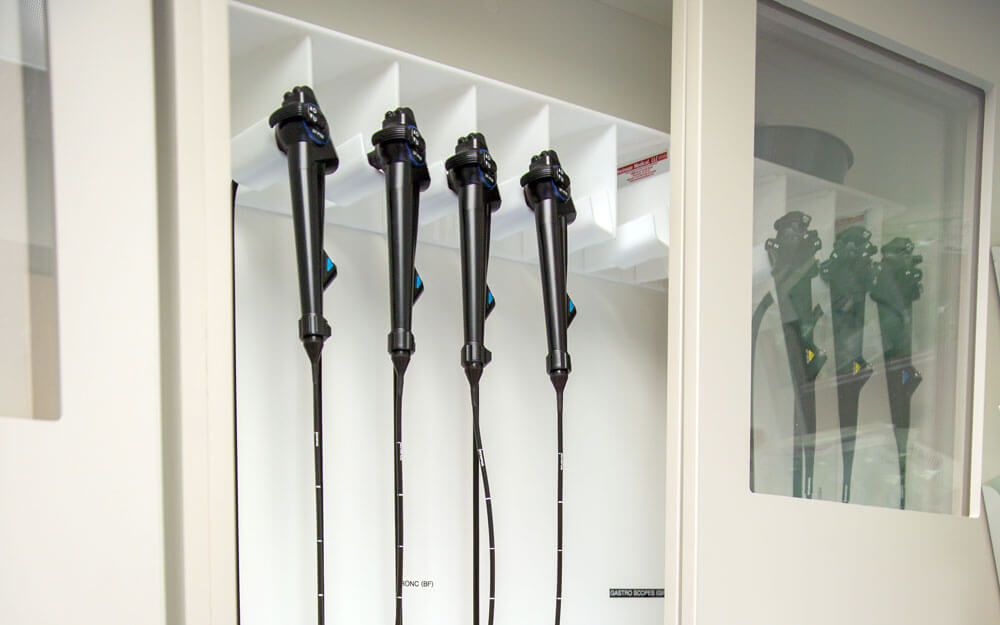
Using an alcohol flush and hanging flexible endoscopes in an ambient storage cabinet is not effective for drying their channel systems, according to research.
A study published in the American Journal of Infection Control that examines the efficacy of flexible endoscope drying found that reusable endoscopes should be dried with compressed air before storage and may benefit from additional drying in a cabinet that provides compressed air directed to the channels.
Endoscopes simply hung without compressed air drying were found to contain the same amount of liquid both pre- and post-hanging up to five days later, according to Michelle Nerandzic, Kathleen Antloga, Christine Litto, and Nancy Robinson, who authored “Efficacy of Flexible Endoscope Drying Using Novel Endoscope Test Articles that Allow Direct Visualization of the Internal Channel Systems.”
Tests that allowed direct visualization of the internal channel systems showed that 10 minutes of drying using compressed air was insufficient to dry all channels.
Reusable endoscopes pose a cross-contamination risk because they are hard to clean and sterilize between uses. Humid environments, such as the inside of an endoscope channel, can be breeding grounds for bacteria like P. aeruginosa, which can cause respiratory or urinary tract infections. This waterborne organism is one of the most common organisms found in contaminated endoscopes.
There are multiple ways to dry an endoscope after cleaning and high-level disinfection. These include using an automated endoscope reprocessor (AER), manual drying, or using a drying cabinet. Many reprocessing guidelines also include directions to flush endoscope channels with 70-to-90 percent ethyl or isopropyl alcohol followed by forced air drying.
Although using an alcohol flush is a common step in endoscope reprocessing practices, these researchers found no difference in the residual fluid remaining after hanging for five days, whether the alcohol was used or not.
Both water and alcohol that remain in endoscope channels pose a risk to patients: the alcohol as an irritant and the water as a source of microbial transmission, the researchers say.
Drying reusable endoscopes has been identified as an essential step in avoiding infection transmission, but manufacturer guidelines are not specific on how to do this. Compounding this challenge, old and new endoscopes are often present in real-world settings, each requiring their own sets of instructions.
Most research on endoscope drying has focused on large diameter channels rather than small because borescopes used in the testing do not fit into narrow diameter chambers. Yet several studies have shown that biofilm is more likely to form in narrow channels, indicating even greater importance in drying the narrow channels.
We’ve written here at Single-Use Endoscopy about studies which show that endoscopy-related infections are among the more frequently reported infections caused by medical devices today. Yet, currently, U.S. multisociety guidelines classify shelf life for endoscopes as an “unresolved issue.”
With no consensus, some recent studies have sought to determine how long endoscopes can be stored before there is a risk of microbial growth. Results have pointed more to the effectiveness of endoscope cleaning rather than the length of time an endoscope is stored.
Because real-world endoscopes were used for this study by Nerandzic and others, interpretation of the results takes into account the channel complexities of a functioning endoscope along with real-world variability in residual liquid and drying times, the researchers say.
Overall, the researchers say, this study helps identify where additional work is needed and highlights the recognition that one rule “does not apply to all for achieving drying in the different types of endoscope channels.”


